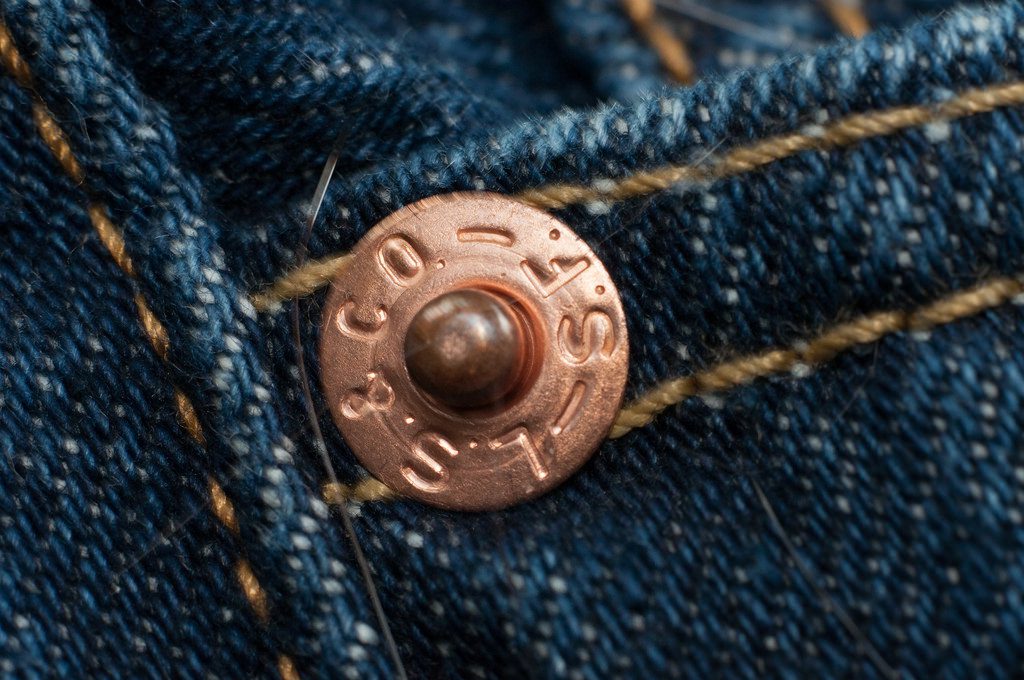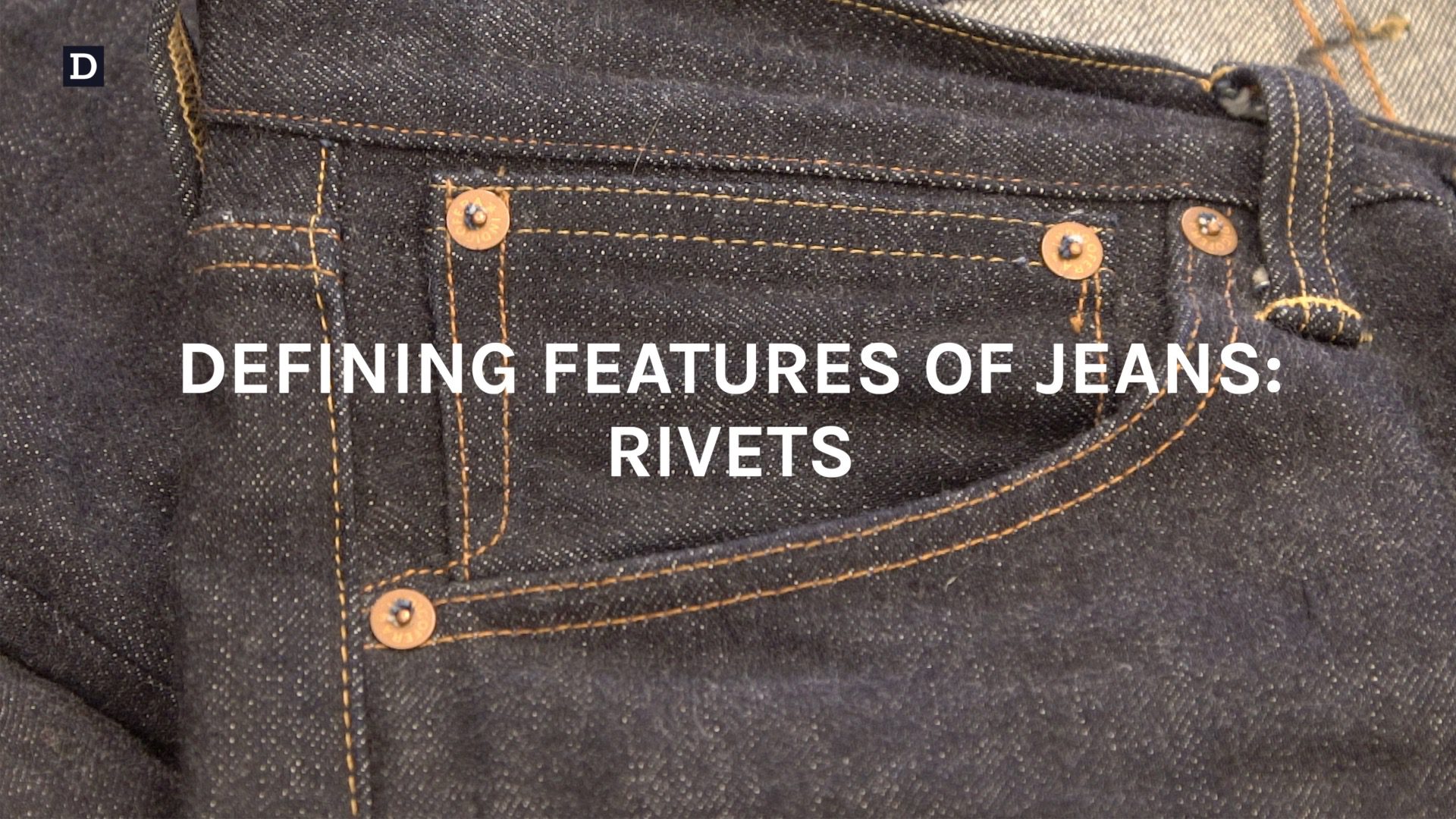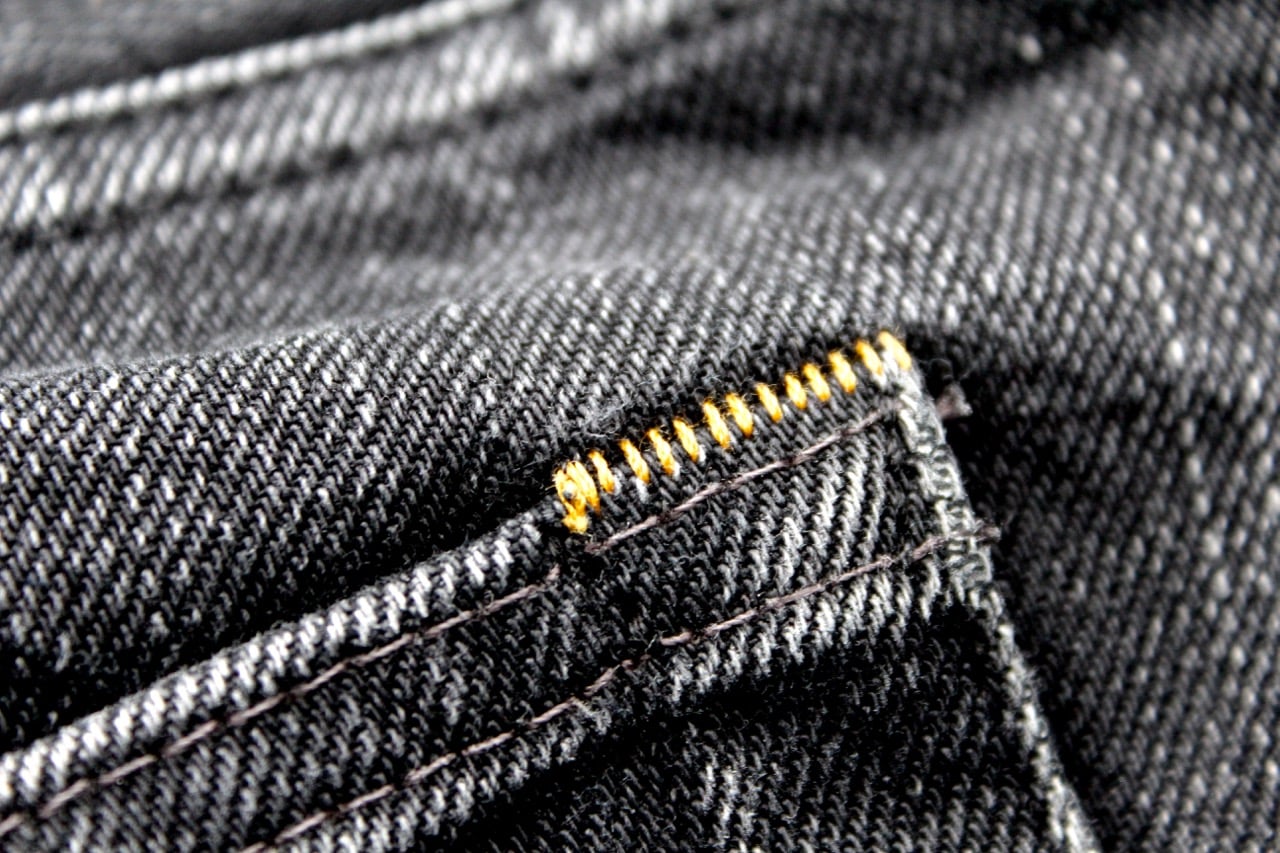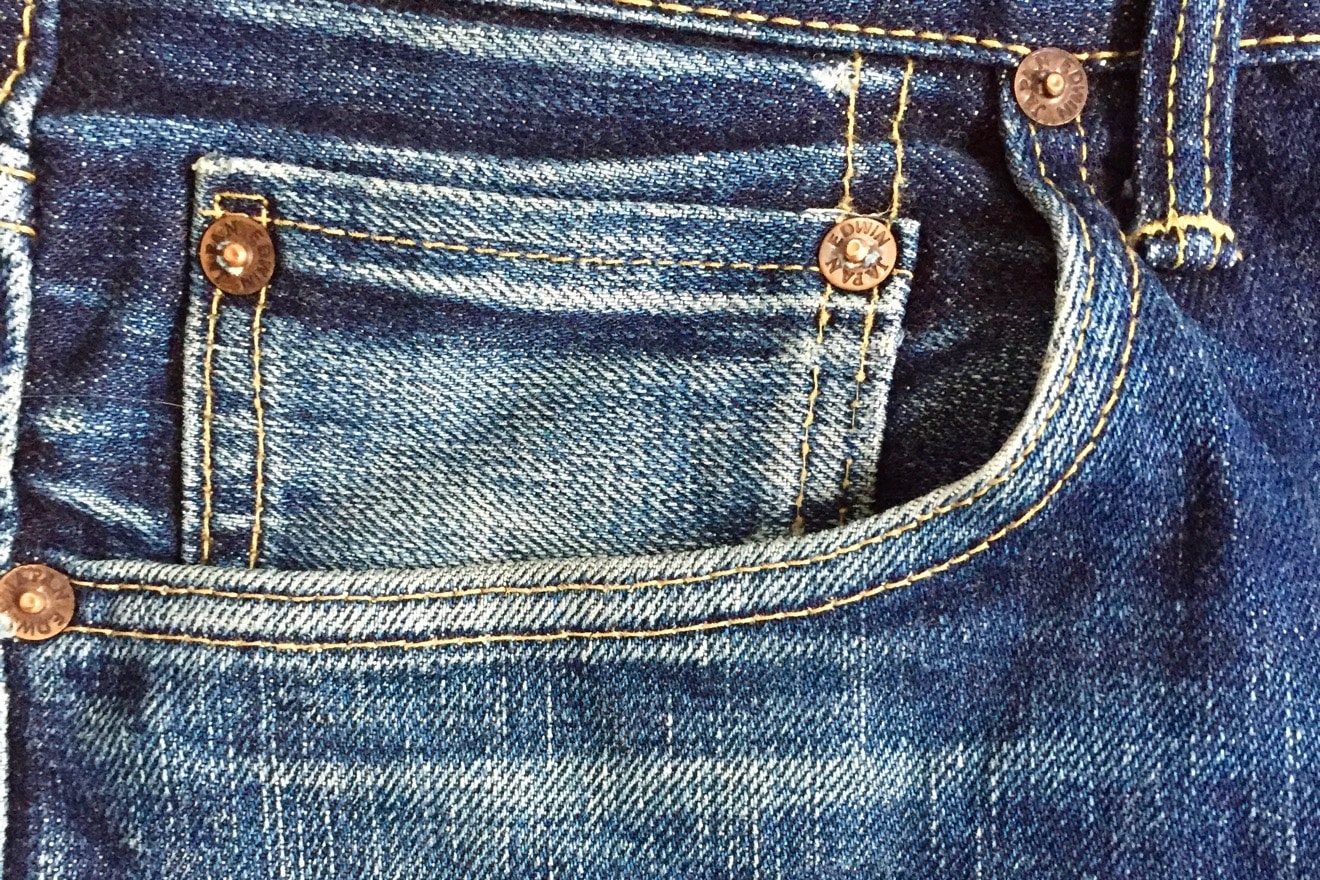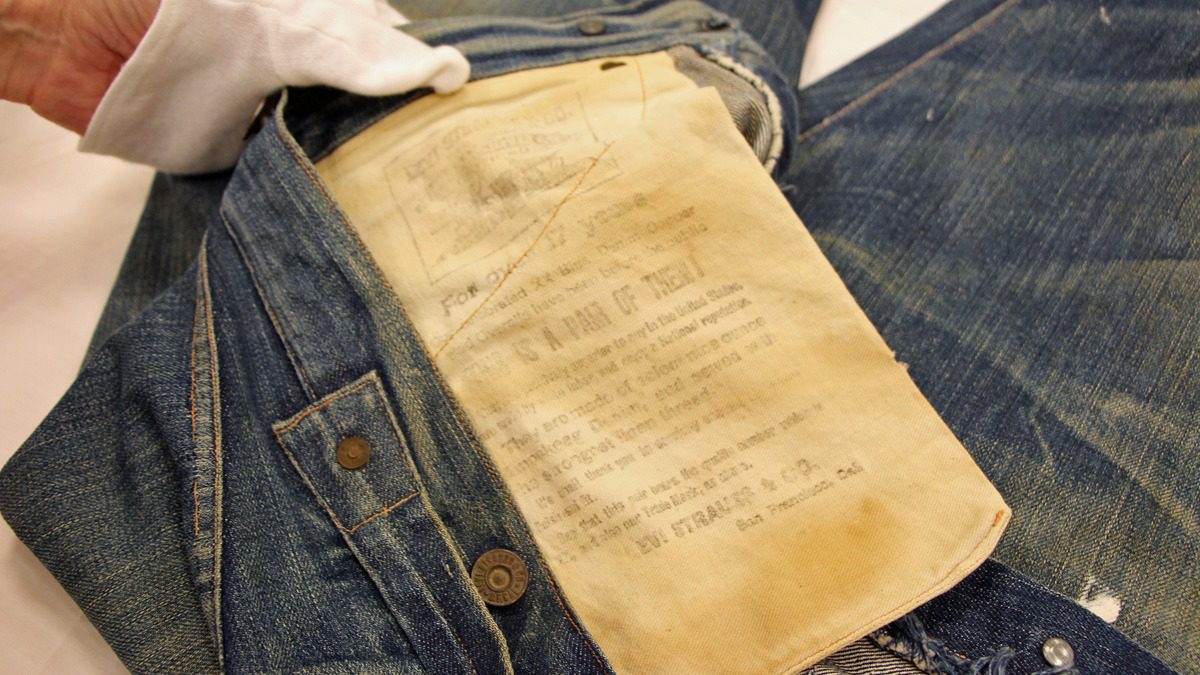A Look Into The History And Meaning Behind The Labels On Your Jeans
When we look for new jeans, there’s much more than the colour and fit to take into consideration. Aspects such as where the jeans were sewn, where the denim was made, or even the environmental impact of a pair of jeans are all things we take into consideration.
These days, more and more of us care about how and where our garments were made. The power of how these aspects influence a sale—and even loyalty to a particular brand—is evident in the labels placed on the garments by makers. Who proudly proclaim the product’s heritage.
I myself like to know that the garments I buy aren’t made in sweatshops. If you’ve looked inside a pair of premium jeans—or in fact any high-end garment—you’ve likely come across some buzzwords printed and sewn onto the labels.
In this article, I’ll be looking specifically at the labels that appear on premium denim, and the semiotic and semantic power that such labels carry.
Country of Origin
Nowadays, most if not all clothing carries a ‘Made in …’ label, highlighting where the garment was sewn. In fact, many countries demand by law that imported products display the country of origin!
Jeans are, of course, no exception to the rule. But there are a few particular marks that get denimheads going.
Made in the USA
For many of us, there’s something magical in those four words.
For many Americans, it could be the conscious decision to support your local industry. For others, the value lies in the nostalgic aesthetics of a tri-coloured label that embody early to mid-20th-century denim: a mark of authenticity. It seems the idea that USA-made equals clothing of a superior quality.
This can be a dangerous assumption to make.
While there are many brands nowadays that base production in the USA and take great pride in creating high-quality clothing, it’s certainly not a given that all USA-made products are of a higher quality than garments made elsewhere.
However, for the most part, American-made denim and the garments sewn from it are usually of a very high quality. Furthermore, the transparency involved in the supply and production chains is exceptional.
Does USA-Made Equal Quality?
It’s a fact known globally that America is the birthplace of the jean. And by way of confirming its pedigree, it can also boast the world’s oldest denim mill in existence: Cone Mills.
For nearly 100 years, the Cone Mills name has been synonymous with the highest quality denim and for supplying Levi’s with the fabric that made the brand as iconic as it is today.
Nowadays, many companies capitalise on this legacy and make sure customers know when Cone Mills’ denim has been used to make their garments.
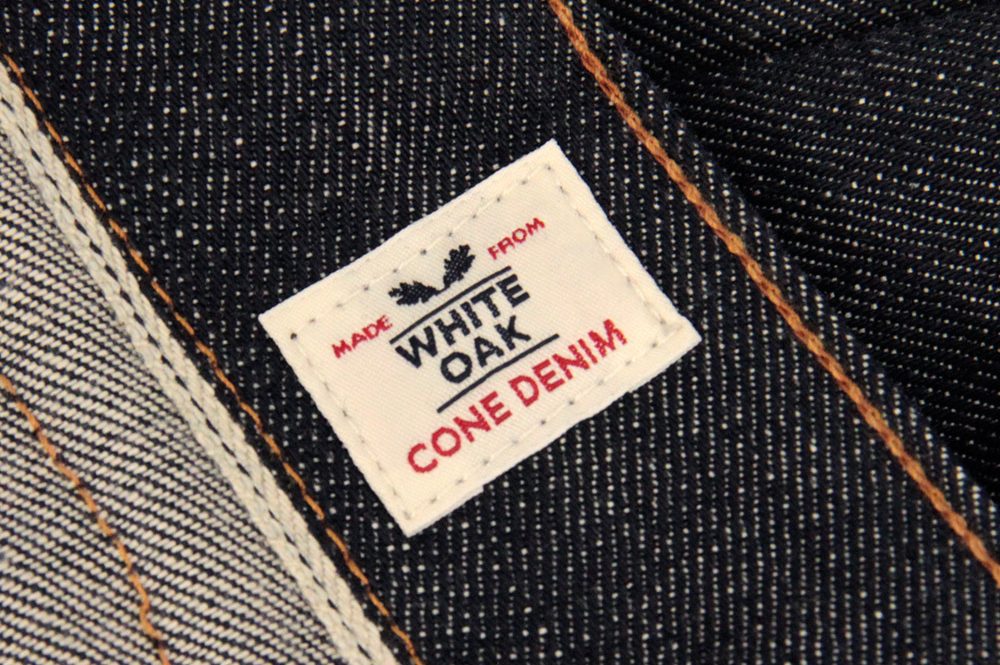
Tellason is one such brand that has an intimate relationship with the mill (together with whom they’ve developed three denim fabrics exclusively for Tellason).
For the guys at Tellason, making sure that as much of their products are locally produced is a founding pillar of the company’s ethos. Yet it as much about offering a high-quality product as it is supporting domestic industry:
95% of everything that carries the Tellason brand was made in (Cone Mills),” explains co-founder Tony Patella. “We do that because we want these places to survive.”
In 1960, over 95% of products sold in the USA were made domestically. Today it’s less than 5%. And it is for this very important reason that brands like Tellason and 3sixteen try to maintain as much of their production at home: without brands like them, the textile industry in the United States would disappear.
USA-Made Means Transparency
Transparency for brands is important. Consumers have never been so acutely aware of the conditions that exist in the textile industry. Now more than ever, we are taking into consideration how ecologically and morally sound a brand’s production chain is when purchasing jeans.
Compare a pair of jeans made in the United States to a similar pair made in Bangladesh, Indonesia or Mexico; it’s usually easier to trace where the denim has been sourced, woven and sewn for the US-made ones.
Furthermore, American manufacturers lie in close cultural and creative proximity to the factories that produce their garments. This proximity has certain benefits: relationships between brands and manufacturers often take the form of collaborations and this allows for a shared passion to flow into the resulting products. Additionally, the close proximity between brand headquarters and factories means that brands can keep a closer eye on their supplier’s quality of work.
Made in Japan
While America is and will always be the spiritual home of jeans, Japan has arisen as the successor to the modern day denim crown.
The end of the 20th century was terribly in terms of American denim: the powerhouse Levi’s had sold off all of its Draper looms and moved production overseas. Wal-Mart began selling jeans for less than $10, which was an accurate representation of the quality of such garments and the level of commoditization that jeans had fallen to.
Japan, however, still produced selvedge denim on shuttle looms at a quality that could not be matched by the mass-produced projectile loom denim.
This preservation of denim tradition, in an age of mass production, has earned Japanese denim the reputation of being of the highest quality. As such, it’s no surprise that denimheads who are looking for the best of the best turn to Japanese-made garments.
Japan-Made Means Ametora
It’s not just the material quality that attracts consumers to Japanese denim. As explained by W. David Marx, Japanese denim brands also preserved the cultural heritage of America’s finest and most iconic garments.
Known as ametora – or “American traditional”, Japan maintained the traditional styles and defining features of the iconic 1950s American wardrobe.
In fact, many staples of the modern American wardrobe are alive and well today thanks to the stewardship of Japanese consumers and makers who valued them at a time when they fell out of vogue in America.
Japan-Made Means Denim With Pedigree
It can at times be difficult to find the origins of a pair of Japanese jeans for us who live in Europe or the United States. However, most denim enthusiasts are familiar enough with the most established Japanese denim mills, like Kurabo and Kuroki, who have supplied denim to brands like Lee and Livid Jeans.
These mills, like Cone, have a reputation built on years of delivering high-quality denim and were among the pioneers to introduce denim heavier than 14 oz. to wider audiences.
In fact, Kurabo Mills stand behind the ‘heaviest denim’ ever made at 32 oz., as seen on Naked & Famous’ Weird Guy model.
Japan’s obsession in recreating classic American jeans has led them to become the world’s best in terms of knowledge and production. You could even argue that American producers are having to relearn things that had been forgotten in the US from their Japanese counterparts.
Coming back to a brand that prides transparency above all else when it comes to their jean, Tellason makes no qualm about using Japanese fabric. In fact, it’s something they proudly put on their label!
Union Made
It’s a phrase rich in historical significance that endures to this day: ‘Union made’.
Nowadays, unless you have a garment that is true vintage, you’ll most likely find this on reproduction jeans from an earlier model. It’s also a phrase that carries a lot of misconceptions over what it actually means.
For some consumers ‘union made’ synonymous with a higher quality product. For others, it’s erroneously associated with products made in the USA, and others still believe that it meant said products were sewn on a Union Special sewing machine.
While products bearing the ‘union made’ label may both be of superior quality and USA-made, the label, in fact, signifies neither of these things.
What it has signified is that the product had been made by unionised workers, like the UGWA. These days, with a market and desire for reproduction jeans, many garments bear the ‘Union Made’ logo on buttons and labels, even if they were not sewn by unionised workers.
It’s a polarising subject: should reproductions be allowed to bear words that are essentially a lie?
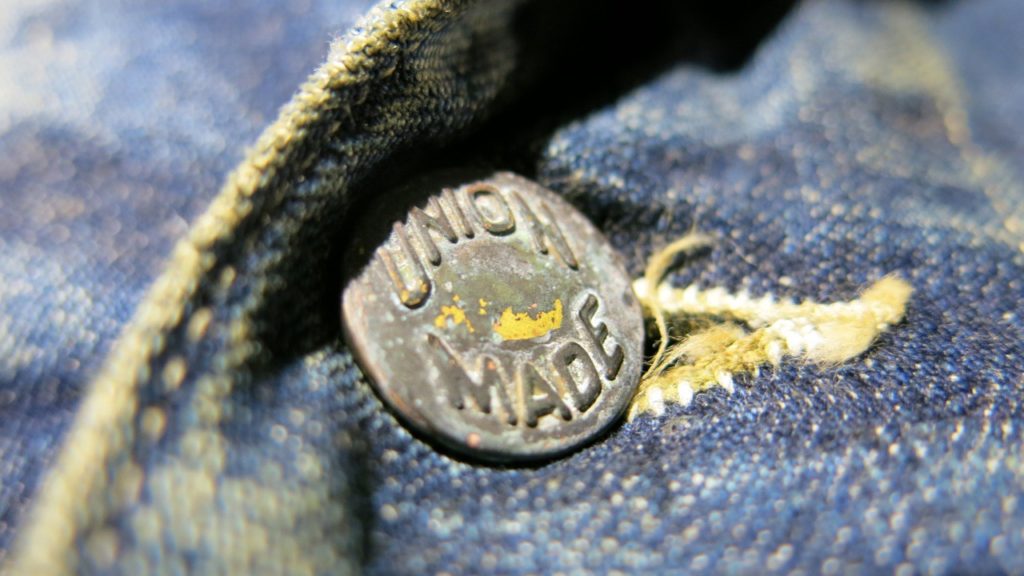
For many, whether they care to admit it or not, it’s all down to symbolism and the semiotics of the ‘union made’ logo.
Many denimheads seek out ‘products with heritage’ or ametora, as the Japanese call it. Brands who cater to this audience understand the significance of ‘union made,’ and will include it either through an effort to accurately reproduce period clothing or to simply evoke the spirit of it.
Nowhere is this more evident than on Japanese denim. In the post-war years of the 1950s, American made goods were indicators of a high social standing, yet comprehension of the English language was still relatively low.
As such, brands that took great care to evoke the spirit of Americana in their garments reproduced everything down to the minute detail, regardless of what the writing actually meant. It is from this that we see non-union made reproduction garments bearing the ‘union made’ logo.
The subject of ‘union made’ goods is somewhat political today. In many parts of the world, workers still work in subpar conditions for low wages.
Even when goods are made under the highest of working standards by non-unionised workers, associating them with the ‘union made’ label can be tricky. You might remember when Unionmade came under fire from Gawker for supposedly misrepresenting their stock as being union made. The fact of the matter is that erroneously using the label ‘union made’ can be seen as undermining the struggle of millions of garment workers worldwide. I’m not here to judge but as a seller or consumer of denim, you should carry this awareness with you.
On the Hunt For Raw Selvedge Jeans?
Launched in 2011 by Thomas Stege Bojer as one of the first denim blogs, Denimhunters has become a trusted source of denim knowledge and buying guidance for readers around the world.
Our buying guides help you build a timeless and adaptable wardrobe of carefully crafted items that are made to last. Start your hunt here!
Share